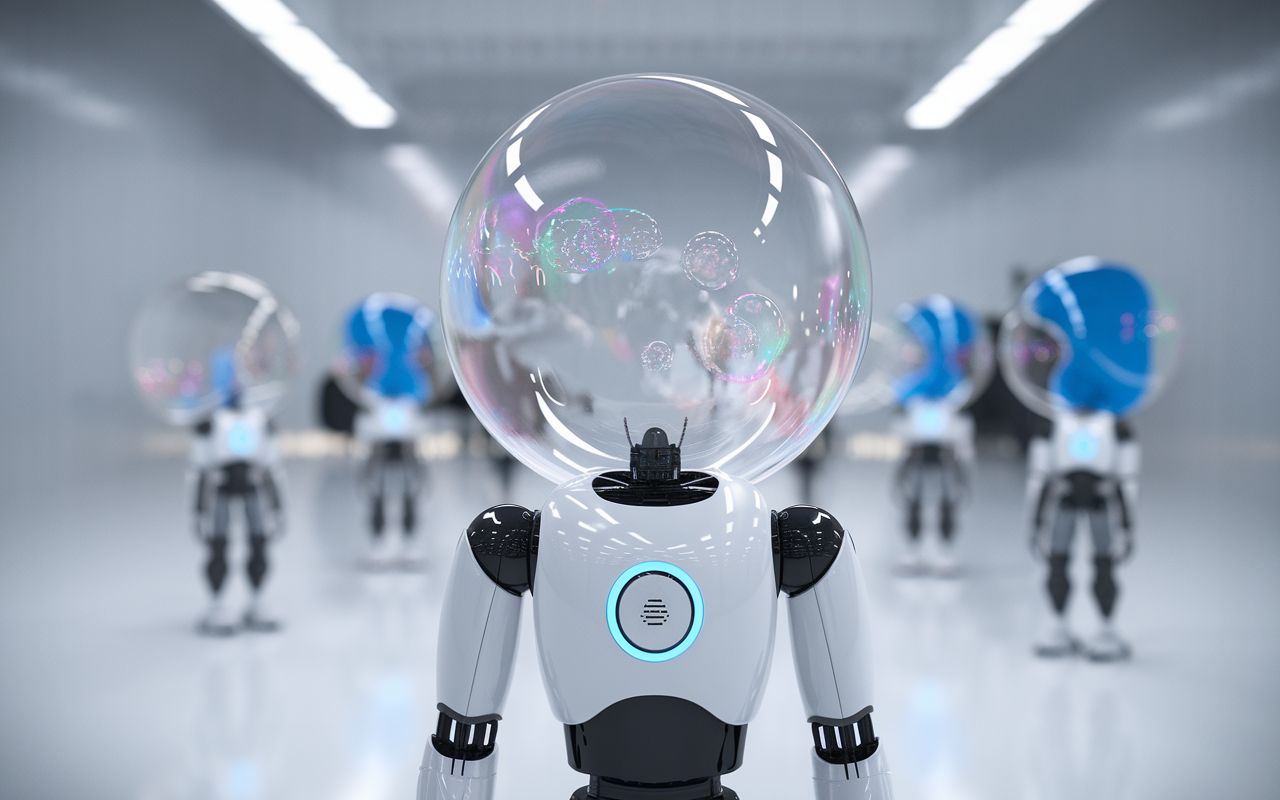The AI Investment Surge: Risks and Realities
Explore the AI investment surge, its risks, and economic implications. Discover historical parallels and future outlooks in this comprehensive analysis.

The AI Investment Surge: Risks and Realities
The current surge in artificial intelligence (AI) investment and enthusiasm is widely recognized as a technology bubble—a phase marked by excessive speculation, soaring valuations, and massive capital deployment into AI-related ventures. Noted economist Paul Krugman recently analyzed this phenomenon, drawing parallels to historical technology bubbles, such as Britain's Railway Mania of the 1840s and the dot-com boom of the late 1990s. The ongoing AI boom, emerging strongly by mid-2025, is both a testament to AI's transformative potential and a warning of the economic risks when financial expectations outpace real profitability.
What Is Driving the AI Technology Bubble?
The AI bubble is fueled by enormous optimism about the potential of generative AI technologies to revolutionize the economy and society. Corporations and investors have poured vast sums into AI development, infrastructure, and software, driving up stock prices of AI-related companies and creating a speculative fervor reminiscent of prior tech booms.
Key characteristics of this bubble include:
- Massive Capital Expenditure: Companies are investing heavily in AI infrastructure, from cloud computing to data centers and advanced algorithms.
- Speculative Stock Valuations: Investor enthusiasm has inflated equity prices beyond what current earnings justify.
- Debt Financing: Some large tech firms, despite strong cash flows, are increasingly relying on debt to finance AI investments, raising concerns about financial sustainability.
- Hype vs. Reality: While AI technologies are impressive and promising, the pace at which these innovations translate into profits remains uncertain. This gap between expectations and earnings is a classic bubble hallmark.
Historical Context and Lessons
Krugman highlights that, like previous technology bubbles, the AI boom is driven by a specific disruptive technology promising profound transformation. The Railway Mania of the 1840s and the 1990s dot-com bubble saw similar patterns:
- Enthusiasts correctly predicted long-term economic transformation.
- Short-term financial returns did not meet expectations.
- Capital spending eventually collapsed, triggering economic downturns.
- Stock prices of many firms tied to the technology plummeted.
However, the current AI boom differs from the 1990s bubble in its pessimistic economic context. Whereas the 1990s were marked by widespread optimism about the future, today's climate features economic caution and uncertainty, dampening consumer and investor exuberance despite the hype.
Economic Consequences and Risks
The AI technology bubble carries significant economic implications:
- Potential Recession Trigger: If AI investments fail to yield expected returns, a sharp contraction in capital spending could precipitate a recession, as seen in past bubbles.
- Labor Market Disruptions: AI adoption is reshaping the job market, accelerating automation and intensifying competition for jobs. While AI may boost productivity, it is not yet clear that wage growth or broad-based employment gains will follow. Wealth concentration could widen, exacerbating inequality.
- Debt and Financial Fragility: Rising corporate debt to finance AI projects increases vulnerability to tightening credit conditions or economic shocks, potentially amplifying downturns.
- Growth Uncertainty: Despite AI's promise, global economic growth remains uneven, influenced by demographic trends, inflation scenarios, and geopolitical factors. Productivity gains from AI could accelerate growth, but only if balanced with sound fiscal and monetary policies.
Broader Context: AI and Economic Productivity
Research shows early signs of increased productivity in regions with heavy AI adoption, such as parts of the U.S. West Coast. However, these gains have not yet translated into higher wage rates or widespread prosperity. This disconnect highlights the challenge of ensuring that AI-driven growth benefits society broadly rather than concentrating wealth among a few.
Moreover, economic uncertainty—stemming from geopolitical tensions, post-pandemic recovery, and shifting labor markets—complicates the impact of AI investment. Governments face the challenge of managing these transitions, protecting vulnerable workers, and fostering inclusive growth.
Visualizing the AI Bubble and Economic Impact
Relevant visual illustrations for this topic include:
- Graphs of Capital Expenditure on AI and Software: Showcasing the rapid increase in AI-related spending over recent years.
- Stock Market Charts of AI-Related Companies: Highlighting valuation spikes and volatility.
- Historic Comparisons: Side-by-side visualizations of the AI bubble with past technology bubbles like dot-com and Railway Mania.
- Infographics on AI’s Labor Market Effects: Depicting automation impact and job market shifts.
Official logos and images of major players driving AI investment—such as Google, Microsoft, and OpenAI—alongside conceptual visuals of generative AI technology (e.g., neural networks, AI-generated content) will complement the narrative effectively.
Implications and Outlook
The AI technology bubble reflects a complex interplay between genuine technological innovation and speculative financial behavior. While AI holds transformative potential, the current hype risks a financial correction that could slow progress and harm broader economic stability.
Policy makers, investors, and businesses must navigate this landscape carefully—balancing encouragement of innovation with prudent financial oversight and social protections. How this bubble evolves will shape not only the future of AI but also global economic trajectories in the coming decade.


